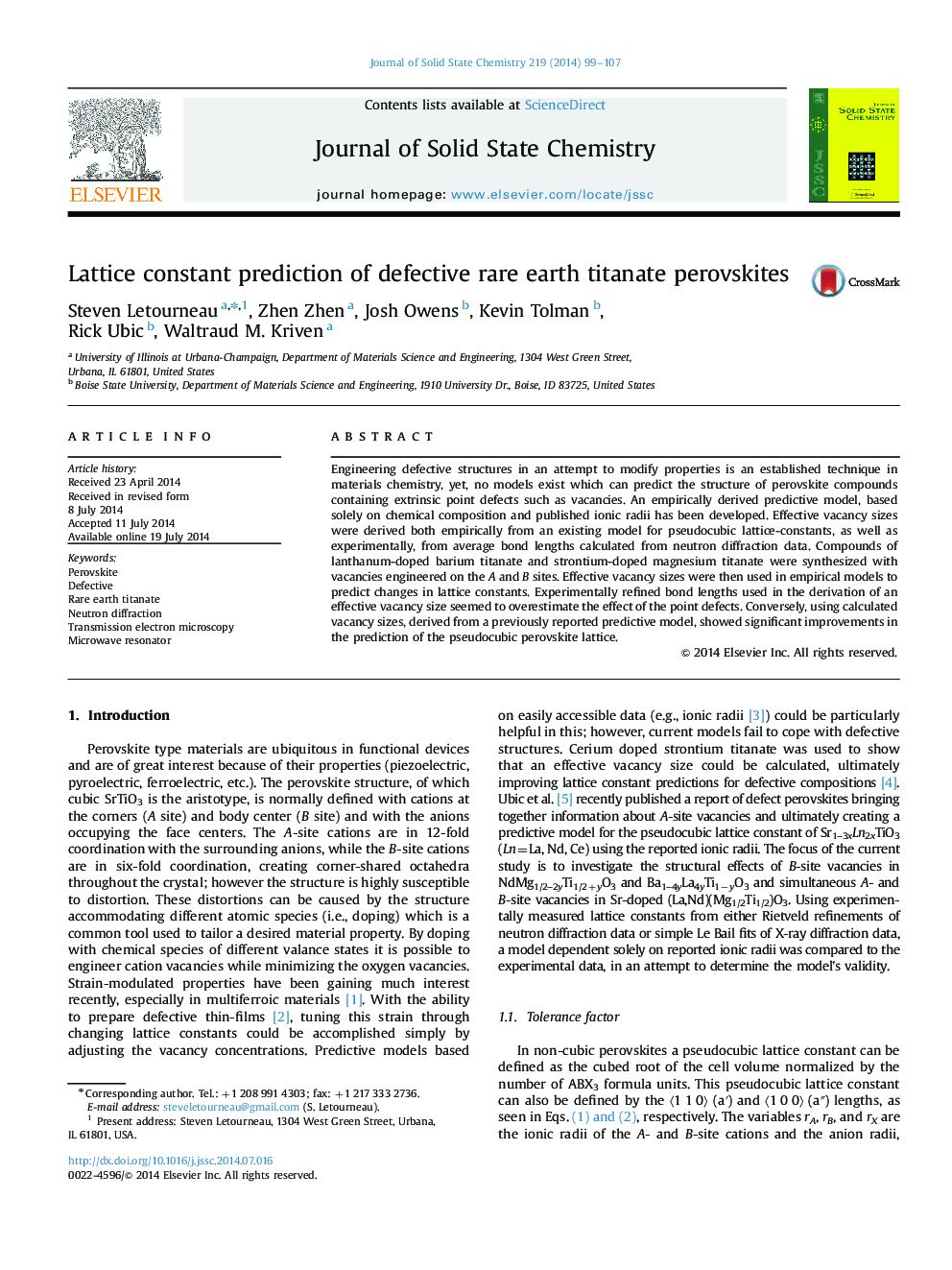| Article ID | Journal | Published Year | Pages | File Type |
|---|---|---|---|---|
| 1330162 | Journal of Solid State Chemistry | 2014 | 9 Pages |
•Defective perovskites were synthesized using the organic steric entrapment method.•Oxygen tilt systems were solved through X-ray, electron, and neutron diffraction.•An effective vacancy size for the cations was calculated from experimental bond lengths.•Discrepancies between Shannon radii and experimental measurements are explored.•An empirical model for predicting apc, with an absolute error of 0.20%, was developed.
Engineering defective structures in an attempt to modify properties is an established technique in materials chemistry, yet, no models exist which can predict the structure of perovskite compounds containing extrinsic point defects such as vacancies. An empirically derived predictive model, based solely on chemical composition and published ionic radii has been developed. Effective vacancy sizes were derived both empirically from an existing model for pseudocubic lattice-constants, as well as experimentally, from average bond lengths calculated from neutron diffraction data. Compounds of lanthanum-doped barium titanate and strontium-doped magnesium titanate were synthesized with vacancies engineered on the A and B sites. Effective vacancy sizes were then used in empirical models to predict changes in lattice constants. Experimentally refined bond lengths used in the derivation of an effective vacancy size seemed to overestimate the effect of the point defects. Conversely, using calculated vacancy sizes, derived from a previously reported predictive model, showed significant improvements in the prediction of the pseudocubic perovskite lattice.
Graphical abstractAtomistic model of Sr0.3Nd0.7Mg0.35Ti0.65O3 and Rietveld refinement of neutron diffraction data. Figure optionsDownload full-size imageDownload as PowerPoint slide
